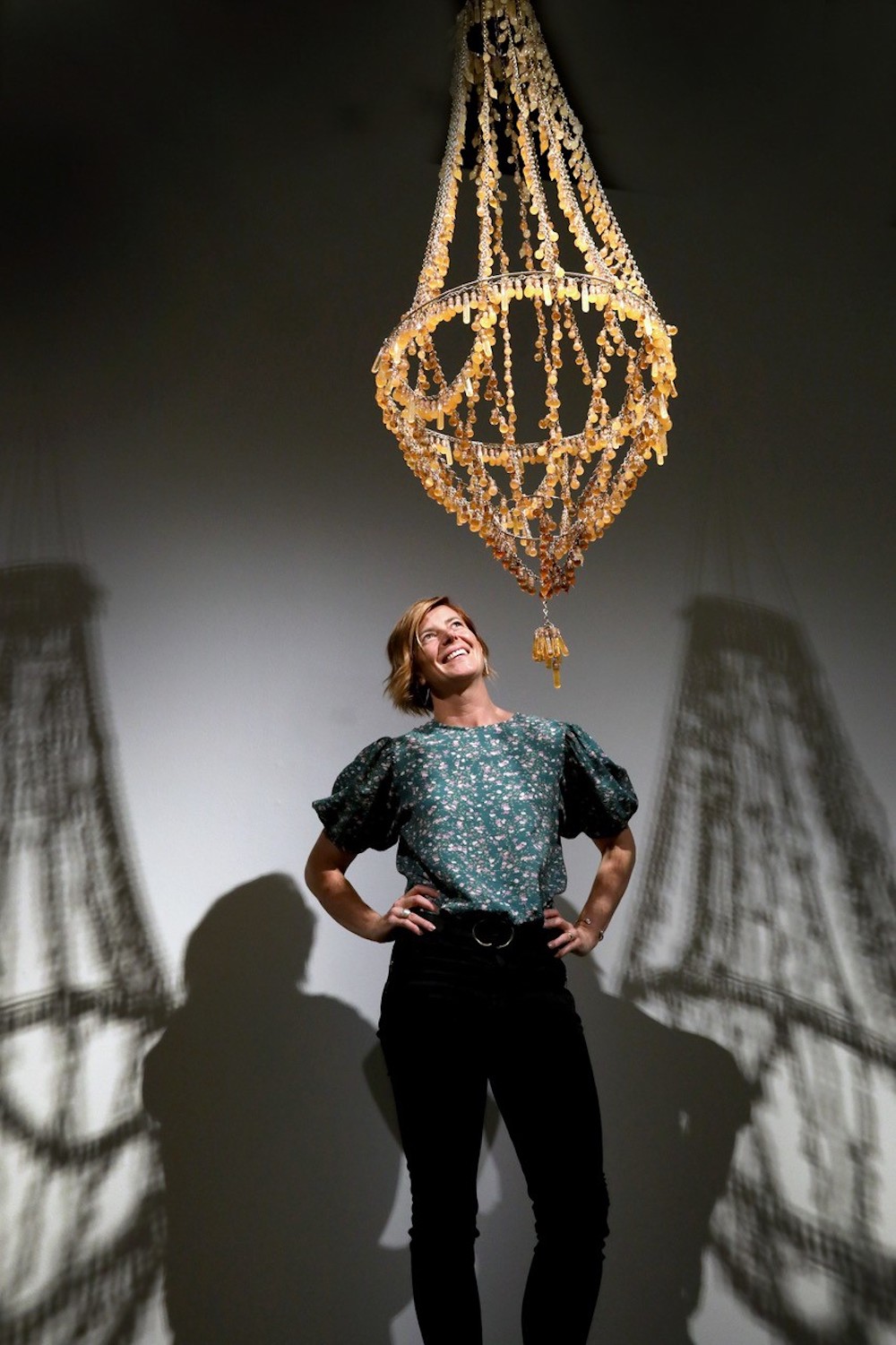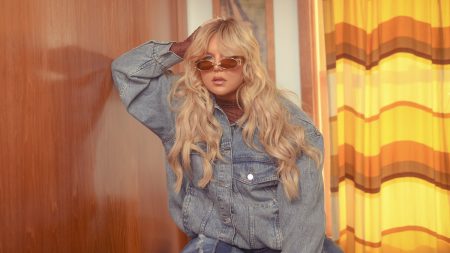Photos by Dean Martin and Israel Baldago
South Australian artist Rebecca McEwan has been named the winner of the Emerging artist category in the 2020 Waterhouse Natural Science Art Prize, for 4000 Stories.
Rebecca McEwan’s piece explores the ancient wisdom of human connection with bees by exploring the visceral experience of the human/bee relationship.
The chandelier represents a recognised symbol of wealth and luxury, Rebecca has gathered honey from beekeepers to fill tiny glass vessel drops on the chandelier.
Each vessel containing the life-time’s work of two to three bees, asking us to question the value we place on honey and the existence of bees in our delicately balanced ecosystem.
When asked what inspired the work, Rebecca pondered on her backyard beekeeping.
“Backyard beekeeping led me to read not only ‘how to’ guides to beekeeping but also the ancient stories of mythology and folklore of bees and the relationship humans had cultivated with them over centuries. Bees were once regarded with awe and reverence and were seen as messengers from the heavens, they were thought to have magical powers and knowledge but somewhere along the way this relationship changed dramatically. We lost the regard we once held for them and the essential role they play in the delicate balance of our ecosystems.”
The concept of this chandelier began during a 3-month artist residency at Sauerbier House where Rebecca researched the history of beekeeping in the Fleurieu Peninsula. She met with local small-scale beekeepers, listened to their stories and learnt about their passion for beekeeping.
Rebecca reflected on the process of building the chandelier, one she called a meditative experience.
“The repetition of filling hundreds of vessels and then painstakingly attaching them to the chains that make up the structure of the chandelier became a way of developing a deep respect for the work these tiny creatures do in supporting our natural environment.”
“There are so many beautiful and magical stories surrounding the ancient relationship humans had with bees and I wanted to create an object which might drive a reconnection to this relationship,” she added.
When asked how it felt to be named the Emerging category winner of the Waterhouse Natural Science Art Prize Rebecca admitted she has always loved coming to see Waterhouse.

“The themes of the Waterhouse Natural Science Prize have always resonated with me and the themes of my practice, so it is an honour to have my work selected and recognised and to be able share my work with others. I feel very excited and privileged to have been selected to exhibit amongst all these other passionate artists let alone being awarded the emerging artist prize.”
Rebecca McEwan’s prize is $10,000 cash.
The Waterhouse Natural Science Art Prize is Australia’s premier biennial natural science art prize and has this year attracted entries from outstanding artists from across Australia, with all states represented among the 68 finalists. The 2020 prize also includes a finalist from Belgium.
South Australian Museum Director, and one of the prize’s judges, Mr Brian Oldman says the Waterhouse prize continues to go from strength to strength and is particularly relevant in 2020.
“In the last year global events have brought us closer to science in our daily lives. I hope viewers of the exhibition leave feeling both artistically enriched and scientifically informed.”
This year’s panel of judges also included Dr David Gaimster, Chief Executive, Auckland War Museum, Margaret Hancock Davis, Curatorial Director, Jam Factory and Professor Anton van den Hengel, Director, Australian Institute for Machine Learning.
Exhibition visitors can have their say and vote for their favourite artwork by submitting an entry form at the Museum by Thursday 18 February, with the winning artist receiving $5,000 in prize money, courtesy of the People’s Choice Dr Wendy Wickes Memoriam Prize.
The exhibition of all finalists in the Waterhouse Natural Science Art Prize opens at the South Australian Museum on Friday, 11 December – 8 March 2021. The winners and highly commended works will then tour to the National Archives of Australia in Canberra.
Tickets are on sale now via www.samuseum.sa.gov.au.
To view the full gallery of finalists, please click here.






















